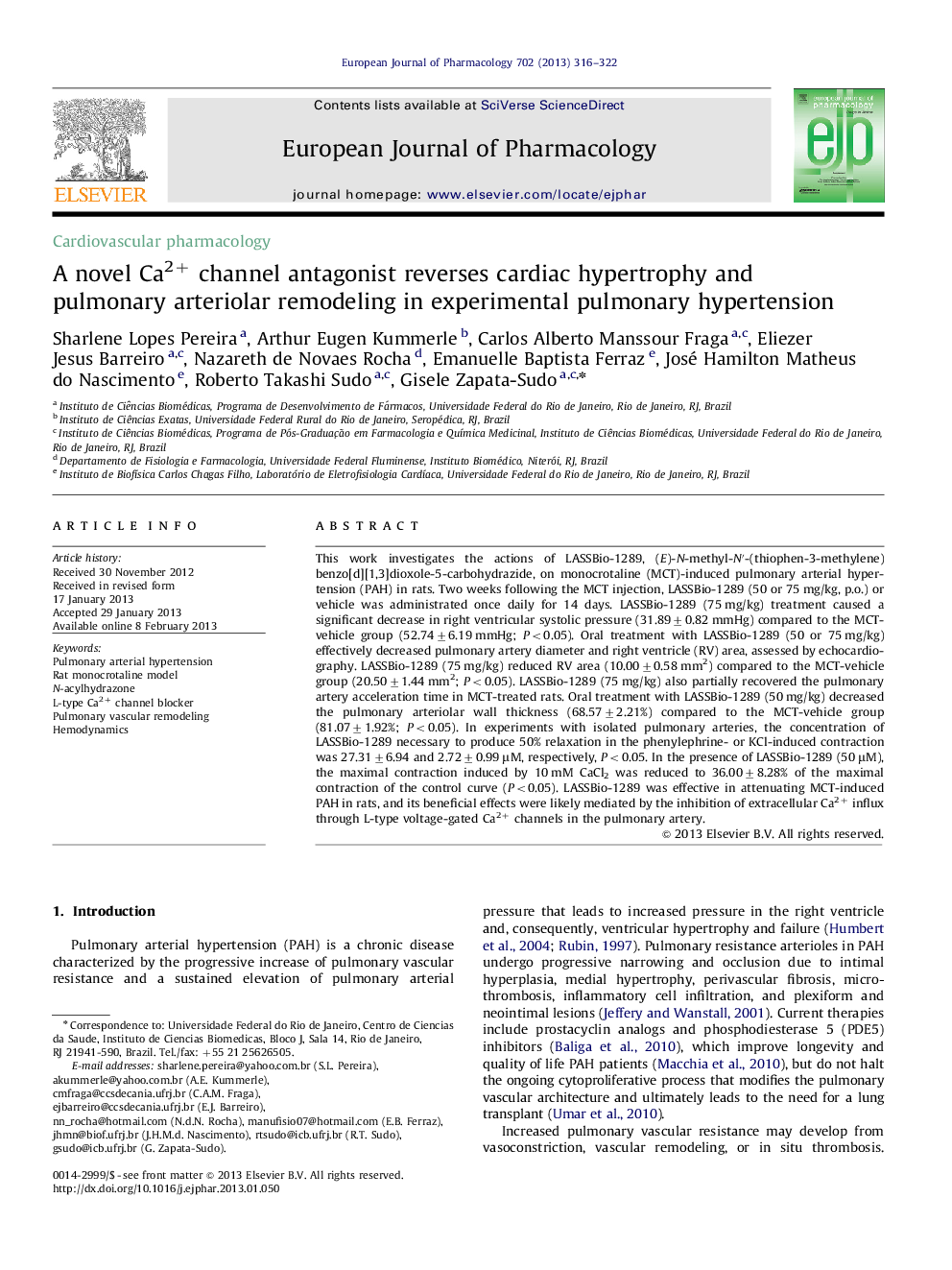| Article ID | Journal | Published Year | Pages | File Type |
|---|---|---|---|---|
| 5828719 | European Journal of Pharmacology | 2013 | 7 Pages |
Abstract
This work investigates the actions of LASSBio-1289, (E)-N-methyl-Nâ²-(thiophen-3-methylene)benzo[d][1,3]dioxole-5-carbohydrazide, on monocrotaline (MCT)-induced pulmonary arterial hypertension (PAH) in rats. Two weeks following the MCT injection, LASSBio-1289 (50 or 75 mg/kg, p.o.) or vehicle was administrated once daily for 14 days. LASSBio-1289 (75 mg/kg) treatment caused a significant decrease in right ventricular systolic pressure (31.89±0.82 mmHg) compared to the MCT-vehicle group (52.74±6.19 mmHg; P<0.05). Oral treatment with LASSBio-1289 (50 or 75 mg/kg) effectively decreased pulmonary artery diameter and right ventricle (RV) area, assessed by echocardiography. LASSBio-1289 (75 mg/kg) reduced RV area (10.00±0.58 mm2) compared to the MCT-vehicle group (20.50±1.44 mm2; P<0.05). LASSBio-1289 (75 mg/kg) also partially recovered the pulmonary artery acceleration time in MCT-treated rats. Oral treatment with LASSBio-1289 (50 mg/kg) decreased the pulmonary arteriolar wall thickness (68.57±2.21%) compared to the MCT-vehicle group (81.07±1.92%; P<0.05). In experiments with isolated pulmonary arteries, the concentration of LASSBio-1289 necessary to produce 50% relaxation in the phenylephrine- or KCl-induced contraction was 27.31±6.94 and 2.72±0.99 μM, respectively, P<0.05. In the presence of LASSBio-1289 (50 μM), the maximal contraction induced by 10 mM CaCl2 was reduced to 36.00±8.28% of the maximal contraction of the control curve (P<0.05). LASSBio-1289 was effective in attenuating MCT-induced PAH in rats, and its beneficial effects were likely mediated by the inhibition of extracellular Ca2+ influx through L-type voltage-gated Ca2+ channels in the pulmonary artery.
Related Topics
Life Sciences
Neuroscience
Cellular and Molecular Neuroscience
Authors
Sharlene Lopes Pereira, Arthur Eugen Kummerle, Carlos Alberto Manssour Fraga, Eliezer Jesus Barreiro, Nazareth de Novaes Rocha, Emanuelle Baptista Ferraz, José Hamilton Matheus do Nascimento, Roberto Takashi Sudo, Gisele Zapata-Sudo,
